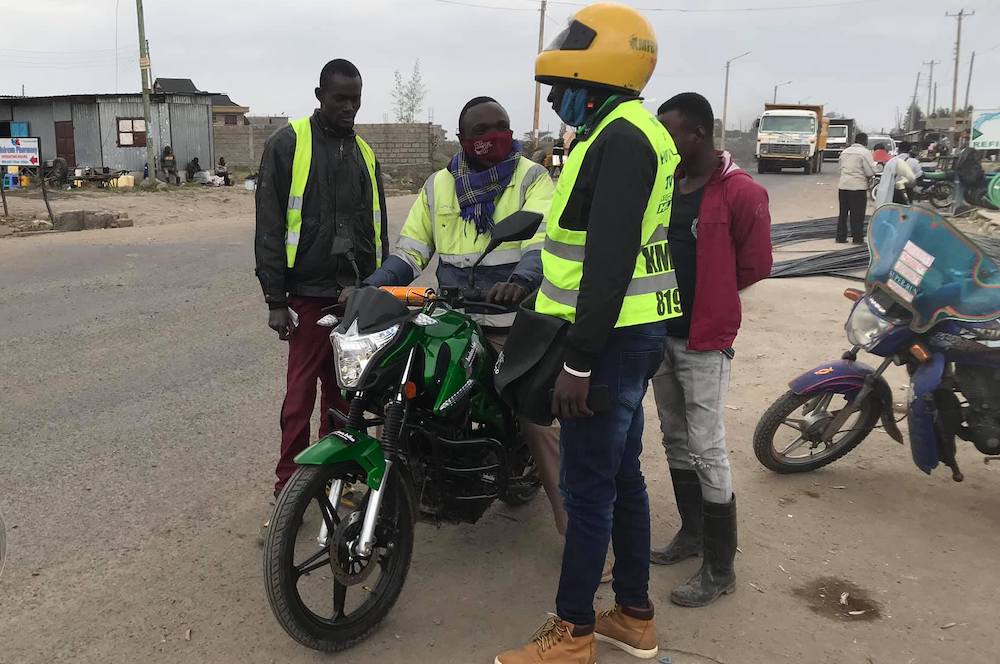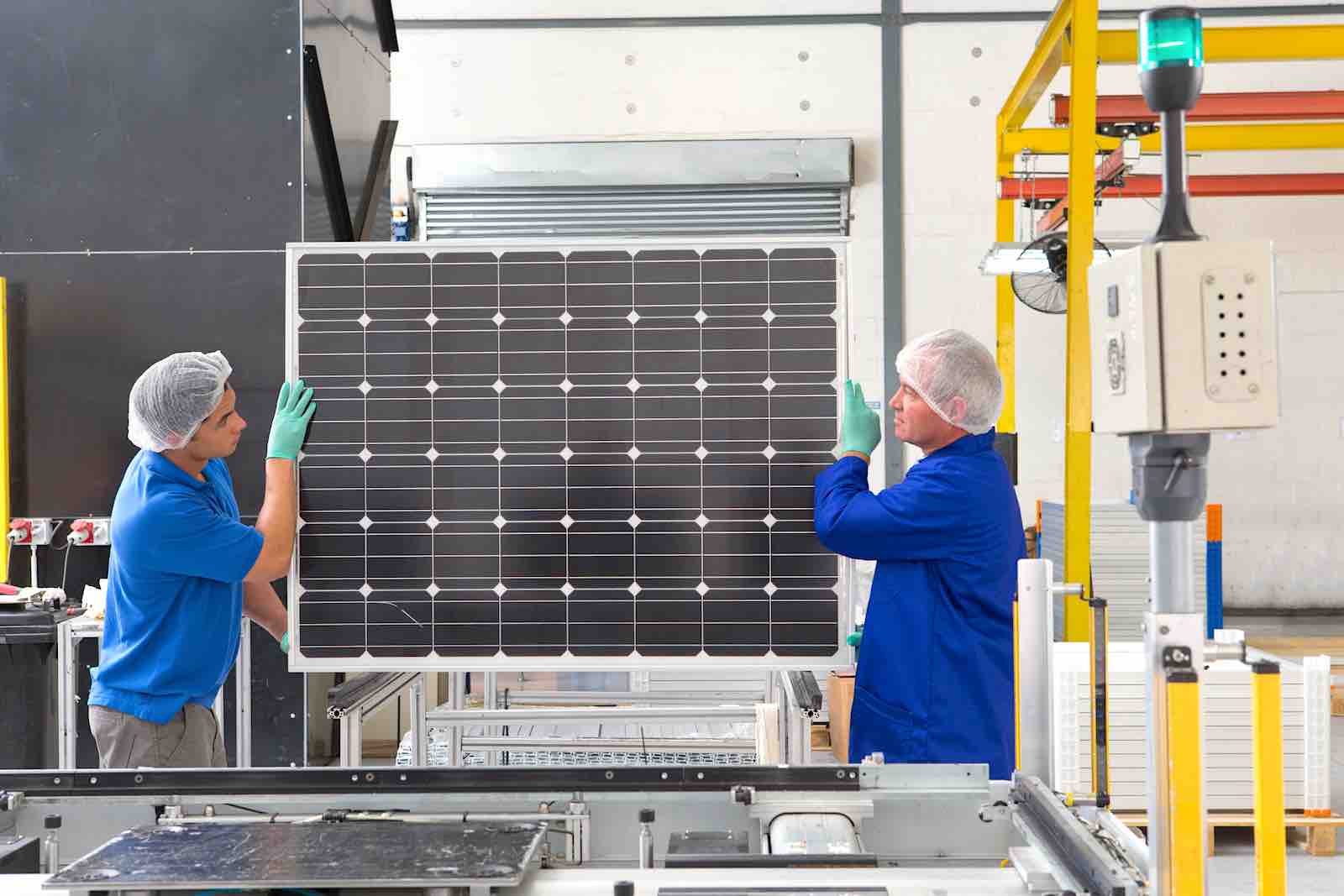ImpactAlpha, June 3 – The streets of Delhi, Kigali, Nairobi and other cities across the developing world are clogged with traffic, including “boda boda” motorcycle taxis and “tuk tuk” auto-rickshaws. But a fast-growing number of those vehicles are now electric.
The e-mobility shift In India, Southeast Asia and Africa is drawing lenders and impact investors to the manufacturing and financing of the two- and three-wheel vehicles that form the backbone of public transportation for billions of people in emerging markets. Some investments can improve livelihoods for drivers and others and reduce air pollution and greenhouse gas emissions at the same time.
In many emerging markets, both people and commerce depend on motorcycles and auto-rickshaws to navigate through traffic-choked streets. There are an estimated 270 million motorcycles in use in the world and millions more auto-rickshaws, most of which are still gas or diesel-powered. In all, the global two- and three-wheel electric vehicle market is an estimated $150 billion opportunity.
“In most developing countries, a primary form of transportation is motorcycles and motorized rickshaws, so there’s just a gigantic market for electrifying those,” says Ecosystem Integrity Fund’s James Everett. The San Francisco-based impact investor led a $3.5 million investment in the e-motorcycle manufacturer Ampersand in Rwanda in April.
Driving demand: Competition among ride-hailing services, government subsidies and other incentives, and an increasing number of commercial, development-finance and asset-backed lenders helping drivers and delivery workers buy their own vehicles.
“Well-constructed, purpose designed electric vehicles should ultimately be more financeable because fewer things can go wrong with them,” Everett explains. “Electric motorcycles, for instance, should have a longer productive life than a petrol motorcycle.”
India’s e-rickshaws
Ride hailing services like Uber, Ola and a number of smaller players that have helped digitize emerging markets’ public transport and logistics sectors are now key players in the electric vehicle transition as well. India’s ride-hailing giant Ola, for example, is building an electric vehicle charging network to support its forthcoming e-scooters, which will be made at a manufacturing plant near Bangalore that has a capacity to produce 10 million vehicles per year.
India has subsidized the purchase of electric vehicles, including two- and three-wheelers, since 2015, when it launched the Faster Adoption and Manufacturing of Hybrid and EV, or FAME, program with $130 million. The government added another $1.4 billion to FAME in 2019.
In Gurgaon, just outside of Delhi, all-electric Oye Rickshaw has developed a three-wheel ride-hailing platform for hyperlocal travel of under five kilometers. Oye offers a monthly subscription-based service that links into bus lines, metros and other public transport systems to give commuters a convenient travel option for the first and last mile of their daily commutes. Oye raised 240 million rupees ($3.3 million) from venture debt fund Alteria Capital in April to support its expansion from five to 20 cities by year end.
Auto-rickshaws, or tuk tuks, have been a gap in the ride-hailing market, Oye’s Mohit Sharma tells ImpactAlpha. “More than 80% of Indians don’t own a two- or four-wheeler and are heavily reliant on public transportation. A lot of investor interest is coming into the auto-rickshaw category for that simple reason.”
Electrifying India’s autorickshaw fleet is a $30 billion market opportunity, Sharma estimates, adding that there already are 2.5 million electric tuk tuks on the road, along with five to six million gas and diesel powered rickshaws. “It’s a huge market.”
In response to the pandemic, which reduced demand for Oye’s ride services by more than a third, the company has built out a delivery service for large e-commerce companies like Big Basket and Flipkart. Oye is also developing a network of battery-swapping stations to compensate for India’s shortage of electric-vehicle chargers and to keep drivers on the road for a full day’s work.
The government support means Oye doesn’t have to offer vehicle financing to help drivers purchase e-rickshaws, though it does facilitate introductions between drivers and lenders. “We are seeing faster adoption because subsidy support is working as a catalyst,” Sharma says.
Another e-rickshaw startup SmartE, also based near Delhi, is manufacturing its own vehicles for last-mile delivery and commuting. The company, which has raised roughly $20 million from investors, has put more than 1,000 of its vehicles into circulation in the Delhi area.
East Africa’s electric ‘boda bodas’
Motorcycle taxis are the commuter vehicle of choice for circumventing traffic in East Africa’s jammed urban centers. Companies like Kampala-based motorcycle finance provider Tugende were early movers in giving drivers more autonomy, while improving safety standards for passengers. They’re now helping lead the region’s shift to electric bikes.
Helping drivers get comfortable with vehicle servicing and secondary markets will prove that “ownership of an e-vehicle works as both a cost-saver and a store of wealth, as it does for other assets,” says Tugende’s Michael Wilkerson. Tugende has provided $35 million in asset financing, mostly for motorcycles in Uganda and Kenya (see, “Tugende helps Uganda’s motorcycle taxi drivers survive the lockdown – and raises $6 million to grow again”).
The company is piloting e-bike financing with Uganda and France-based manufacturer Zembo, which is also building a network of solar-powered battery charging stations. “Tugende is extremely excited about the emergence of e-mobility players in East Africa and beyond,” Wilkerson says.
Renewable-energy charging stations represent a reliable power source in places where grid connectivity is spotty or unavailable, and they’re a clean power source, making electric vehicles a truly green transport option (unlike elsewhere, where charging infrastructure is powered by fossil fuel-dependent electricity grids.)
But charging infrastructure—renewably powered or not—and battery-swapping stations are sparse across East Africa, posing a significant hurdle to electric vehicle adoption in the region. Nairobi-based Ecobodaa is not only manufacturing electric motorcycles, it is developing a network of battery swapping stations to support the EV transition.
“There needs to be a huge investment in this space as this is essentially what will make the riders switch as smooth as possible,” says Ecobodaa’s Kimosop Chepkoit. The company, which raised capital in April from Persistent Energy Capital, is also offering asset financing to ease drivers’ switch to electric.
Kigali-based electric motorcycle maker Ampersand is getting a boost from Rwanda’s excess supply of electricity, 90% of which comes from renewable sources. Rwanda approved a spate of pro-EV measures in April to reduce electricity rates for charging infrastructure and allow duty-free imports on electric vehicles and auto parts.
Ecosystem Integrity Fund’s Everett says Rwanda’s small size and readily available power makes it an ideal place to crack East Africa’s early e-mobility opportunity.
“It is a great entry market because it allows the company to build a foundation, perfect its business model, and learn how to scale before moving into markets that may be larger but more difficult.”
An earlier version of this article attributed quotes to Ecosystem Integrity Fund’s Geoff Eisenberg instead of EIF’s James Everett.











